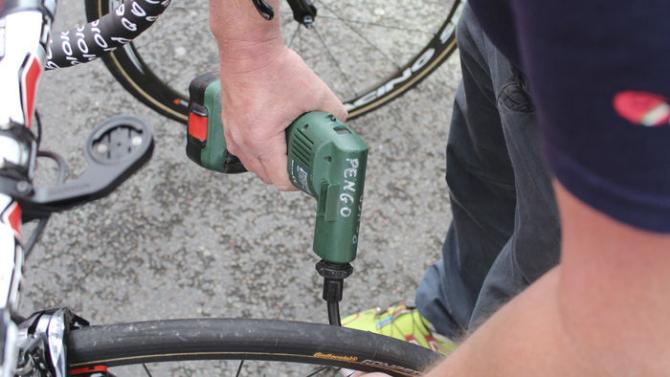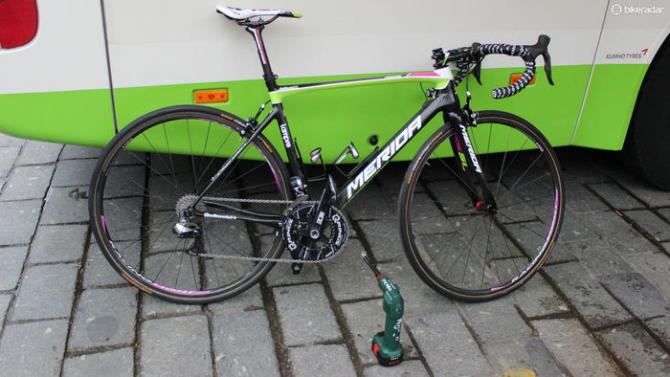Tour tech: Tyre pressure
How much air pressure pros use at the Tour de France


This article originally appeared on BikeRadar
Asking a pro mechanic what the perfect tyre pressure is for racing is like asking a physiologist what the ideal weight is for a racer. The answer is, well, it depends.
Variables that affect tyre pressure include tyre width, tyre type (mostly tubular, but occasionally clincher for time trials), wet or dry conditions, road surface, rider weight and rider preference.
In the Tour de France caravan, there is a mix of science (Astana head mechanic Gabriele Tossello studies charts on rolling resistance), tradition (‘just pump it up to 8 bar') and even gut feel. We watched one rider walk off his team bus and let out a bit of air in both tyres without so much as pressing on the tyres, much less using a gauge.
There are some areas of general consensus. For example, mechanics agree that bumpy roads call for wider tyres with less pressure than normal. But there is also a range of thought on what to do for the rain. Some mechanics leave pressure as it is for the dry; others lower it.
Taking a page out of its auto-racing heritage, Michelin has a rain clincher tyre with siping on the tread. While some may think this is to channel water away, the actual reason is to reduce the surface area of the tyre, thereby increasing the pressure on the road — and hopefully the grip — of the remainder. Michelin does not have a dedicated rain tubular that we are aware of, "but the physics are the same," said former ProTour mechanic and current Michelin spokesman Nick Legan. "A narrower tyre, with a slightly crowned profile will help to increase the contact pressure, therefore displacing water and increasing traction. 'Elephant on high heels' is my preferred mental visual cue."
Further, for rainy days, it is good to have a tyre with good puncture resistance, as water acts as a lubricant, allowing debris to cut through more easily.
The latest race content, interviews, features, reviews and expert buying guides, direct to your inbox!
In terms of tyre width, we have seen everything from 21mm all the way up to 30mm for the ‘Paris-Roubaix’-like stage 5 that tackled numerous stretches of cobblestone roads.
For this Tour, tyre pressures have ranged everywhere from 4 bar / 58psi on the cobbles up to an expected 10 bar / 145psi for certain riders for the stage 20 time trial. The highest pressure we have heard used? That would be 15 bar, as put in by Tinkoff-Saxo Bank mechanic Rune Kristensen, for a large rider for a road stage (though not at this Tour).
Here are examples of the air-pressure ranges for two teams at this year’s Tour de France, as provided as approximations by their mechanics.
| Row 0 - Cell 0 | Dry | Wet | Cobbles | Time Trial |
| Astana | 7.5-8 bar | 7-7.5 bar | 6 bar | 7.5-8.5 bar |
| Row 2 - Cell 0 | 109-116psi | 102-109psi | 87psi | 109-123psi |
| Cofidis | 7-7.5 bar | 7-7.5 bar | 6 bar | 10 bar |
| Row 4 - Cell 0 | 102-109psi | 102-109psi | 87psi | 145psi |
